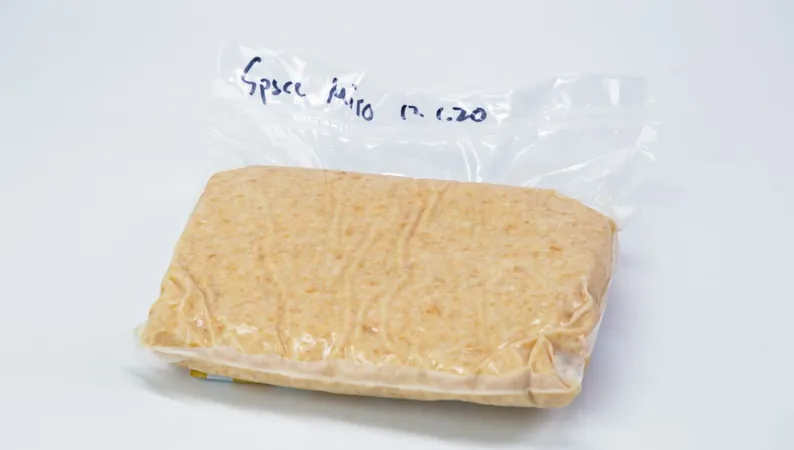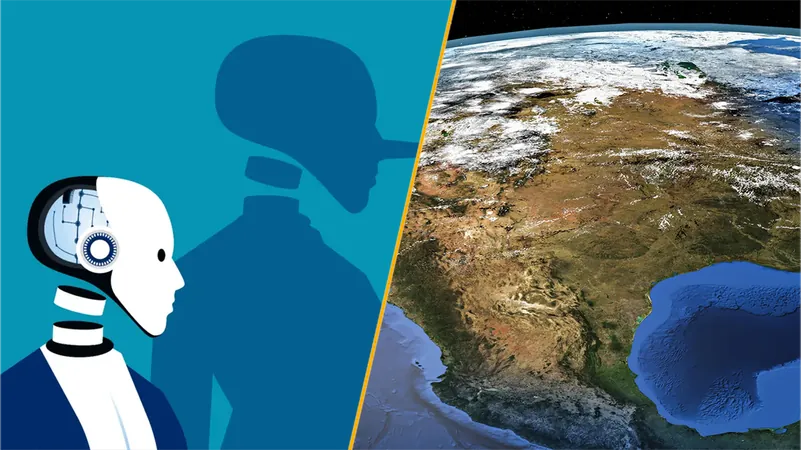
Revolutionary Squirrel-Inspired Robot Perfects Precision Landings – This Could Change Robotics Forever!
2025-03-24
Author: Arjun
Squirrels are masters of agility, effortlessly leaping between branches, executing precise landings, and navigating complex tree environments like acrobats in the wild. Their incredible athleticism has long captivated scientists and researchers alike. Now, a groundbreaking development from the University of California, Berkeley, could redefine robotics as we know it.
A team of biologists and engineers has crafted a remarkable one-legged robot named Salto, which mimics the remarkable landing abilities of squirrels. This innovation allows Salto to land accurately on narrow perches, a feat that was previously unachievable by robots.
Unlocking Nature's Secrets for Robotics
The potential for enhancing robotic movement began with the study of how squirrels manage their acrobatics mid-air. "We are currently limited in how we navigate challenging environments like collapsing buildings or cluttered disaster sites. Squirrels handle these scenarios with ease, and our goal is to replicate that capability in robotics," explained Robert Full, a co-senior author of the study.
Salto was initially conceived in 2016 and could already hop effectively. However, researchers pushed the boundaries by aiming to enable the robot to land on slender rods with precision – a task that mirrors the gymnastics of its furry counterparts.
Programming Squirrel-Like Reflexes into Robotics
Justin Yim, a former graduate student at UC Berkeley and now an assistant professor at the University of Illinois Urbana-Champaign, played a pivotal role in this advancement. He translated the behavioral strategies of squirrels into movement algorithms for Salto. "When we jump, we instinctively make adjustments to avoid falling over upon landing. The same principles apply to Salto," Yim shared.
The key insight from this research is the observation that when squirrels leap from heights, they often execute a form of a front-legged handstand upon landing. An impressive 86% of the landing force is absorbed by their front legs, underlining the importance of strength and technique. This understanding has now been incorporated into the programming of Salto, allowing it to adapt and stabilize during mid-air maneuvers.
Future Applications: Beyond Earth
Interestingly, Yim is applying these strategies in an ambitious NASA-funded project aimed at creating a robot capable of navigating the icy surface of Enceladus, one of Saturn's moons. As we venture into space, the lessons learned from squirrels could very well guide us in developing robots capable of performing in low-gravity environments.
In the course of their studies, researchers discovered that squirrels do not rely on thumbs—unlike monkeys—to clutch branches while leaping. They use the entire surface area of their feet, which surprisingly offers an advantage when rapid movement or escape is necessary. This discovery prompts the question: Could robotic design benefit from abandoning traditional grasping mechanisms?
The Case for One-Legged Robots
Salto’s one-legged design might initially appear unstable, yet Yim argues it is the most effective layout for maximizing jumping power. "By relying on one leg, you can concentrate all your energy in one place, optimizing the jump height," he asserted.
With Salto's success, there's a vibrant future on the horizon, where robotics inspired by nature can traverse unstable terrains, scale treetops, and potentially explore extraterrestrial landscapes. This interplay between biology and engineering reveals how these remarkable creatures continue to inspire technological advancements, inching us closer to building machines that can navigate and thrive in environments previously thought impossible for robots.
Stay tuned for more updates on this fascinating blend of nature-inspired robotics, as we watch Salto leap toward an extraordinary future!



 Brasil (PT)
Brasil (PT)
 Canada (EN)
Canada (EN)
 Chile (ES)
Chile (ES)
 Česko (CS)
Česko (CS)
 대한민국 (KO)
대한민국 (KO)
 España (ES)
España (ES)
 France (FR)
France (FR)
 Hong Kong (EN)
Hong Kong (EN)
 Italia (IT)
Italia (IT)
 日本 (JA)
日本 (JA)
 Magyarország (HU)
Magyarország (HU)
 Norge (NO)
Norge (NO)
 Polska (PL)
Polska (PL)
 Schweiz (DE)
Schweiz (DE)
 Singapore (EN)
Singapore (EN)
 Sverige (SV)
Sverige (SV)
 Suomi (FI)
Suomi (FI)
 Türkiye (TR)
Türkiye (TR)
 الإمارات العربية المتحدة (AR)
الإمارات العربية المتحدة (AR)